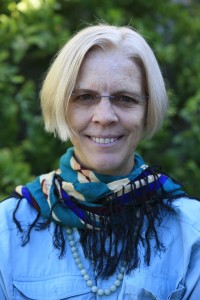 Dr. Anabel Ford, “The Ancient Maya and their Forest: A Co-Creative Landscape.”
Dr. Anabel Ford, “The Ancient Maya and their Forest: A Co-Creative Landscape.”
Popular views of the Classic Maya Collapse present a tableau of an environment destroyed for the avarice of the culture itself. Too many demands on the populace, unchecked population growth, overuse of the landscape, this is a convenient view; it reflects our own disastrous relationship to our environment in general and our treatment of the tropics in specific. Our Western view of the tropics as challenging and difficult, even inclement, colors our interpretations. How could the Maya civilization arise in this setting? The collapse seems inevitable.
We know that the agrarian Maya emerged in the southern Maya lowlands and thrived as a growing civilization for some 2,000 years. By the Classic Period (AD 250-900), they were recording important events in carved stone, on decorated pottery vessels, and inside bark books. The Maya documented regal facets of life, — challenges to power, alliances and visits, as well as celebratory proceedings– recorded from the earliest times through the Spanish conquest. Recent research in the Maya forest of El Pilar provides new insight into the development of the Maya and how they lived within their forest. Surveys of the landscape, working with the traditional farmers, and collaborating with governments to conserve the culture and nature of El Pilar reveals a new integrative approach to the understanding of the Maya.
Dr. Ford is President of Exploring Solutions Past and Director of the MesoAmerican Research Center at UC Santa Barbara. She has taught at UC Santa Barbara for over 30 years and has conducted extensive archaeological research in Belize and Guatemala. Ford’s focus on understanding the ancient Maya landscape has grown and branched into several areas of research: How did the Maya interact with the rain forest? How did climate change and geography affect settlement patterns? And how were population expansions and contractions related to the environment? Dr. Ford has been able to address these diverse yet interrelated themes from detailed investigation of architecture to artifacts. She has tracked the economic and spatial patterns of the Maya of El Pilar, a major center she discovered and mapped in 1983, and now is a binational park in Belize and Guatemala. Most relevant to our challenges of the twenty-first century, Dr. Ford’s work demonstrates that the Maya were able to prosper over millennia with a distinctly local relationship to the tropical environment she calls the Maya forest garden, showcased at El Pilar.


